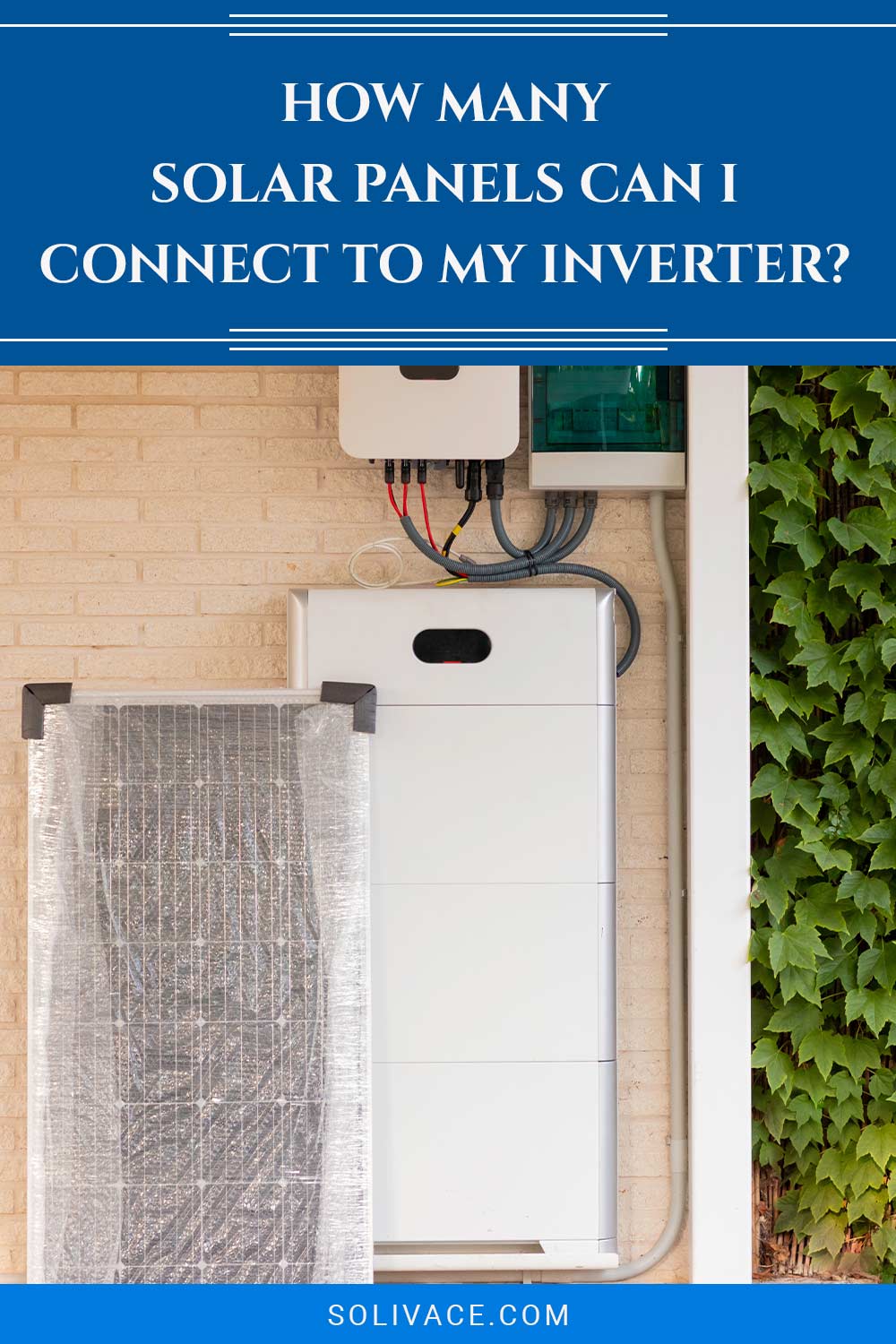How Many Solar Panels Can I Connect To My Inverter?
We may earn commissions for purchases made through links on our site. Learn more on our about us page.
Each controller model will come with a voltage limit, which comes in twelve, twenty-four, and forty-eight volts for solar panels and between three hundred and three thousand volt systems.
So most forty-eight-volt panel systems will allow for about fourteen panels and twenty-eight panels.
You can check this on the label, but you should have this information beforehand. For example, when planning your grids, it might behoove you to mix and match different voltage panels to get the maximum amount of solar power captured and efficiently produced.
This will allow for different numbers for different configurations, and puzzling together a grid of panels will be a challenge for homeowners.

Is there a Maximum Number of Panels?
There are going to be some systems that will have multiple inverters to make up for the additional panels that have been introduced to the solar farm.
For conversation’s sake, let’s take a forty-eight-volt panel and use a three-hundred-volt inverter, which will equal about six panels in total.
A simple answer will be that there is a limited number of panels that can be connected to the inverter at one time, any additional panels will require additional inverters, and the safer option is to run separate systems of adequate voltage panels.
How Do You Calculate it?
Let us start with a simple example:
a three-hundred-volt inverter being fed by twenty-volt solar panels, making the equation of the inverter’s voltage of three hundred volts (300 V) divided by the solar panel’s voltage of twenty volts (20V) which will equal to around fifteen panels total.
Of course, this is one of the more perfectly fitting equations, but this will be the simplest way to figure out how many panels you need.
Think about it like this, there will be a maximum amount of power the inverter can handle (for example, 10V), and there will be only so many panels (1V) that can fit into the system (ten 1v solar panels will work with a ten-volt inverter).
What is the Average Number of Solar Panels per Inverter?
There is no overall average number of panels per inverter due to the fact that each inverter is different.
In saying this, the numbers used earlier in the article will be considered average between ten and twenty panels per home, which are normally one inverter setups, depending on the size of the rooftop.
Suppose we use the numbers from the previous examples given. In that case, the averages will depend on the project size, roof sizes, inverter power, and many other conditions that make this difficult to answer in a general sense.
What Happens if You Connect too Many Panels to an Inverter?
First off, the entail error will be the system’s inefficiency, and power is collected and generated but not utilized because the inverter does not have enough voltage capacity.
As a result, there is power being lost and the potential risk of overworking the controller systems and hardware.
The next risk will be that of fire to the controller hardware and to the battery systems. Just as it is with overcharging a storage battery, these risks come with supplying too much power to a system that does not have the capacity.
Final Thoughts on How Many Solar Panels can You Connect to Your Inverter
These issues are easily avoided with some thought and preplanning before installing the solar panel system. When working on the plans for the solar power generation systems, focus on efficiency, not the overall production of electricity.
Larger voltage panels will save you space and installation costs, plus guarantee easier calculations concerning the efficacy, so be sure to start with the larger panels and mix in the smaller ones when completing the circuit.
Be sure you have doubts about consulting an expert and consider hiring a technician to review the system.



Leave a Reply
You must be logged in to post a comment.